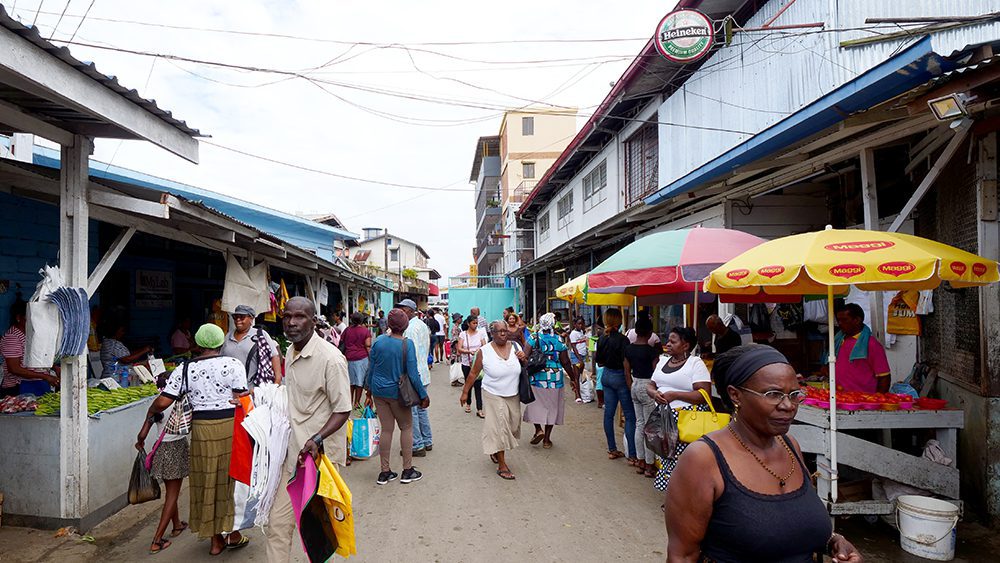Paramaribo, Suriname – Travel Tips
Category
Categories
Popular Articles

## Overview of the Destination
Hailing as the cultural, commercial, and administrative capital of Suriname, Paramaribo, is a city teeming with multi-cultural allure and rich history. With its colonial Dutch architecture recognized as a UNESCO World Heritage Site, and a colorful blend of cultures that include East Indians, Africans, Amerindians, Chinese, and Europeans, Paramaribo offers a fascinating venture into a unique world. Noted for its picturesque, tree-lined streets, vibrant marketplaces, and stunning riverside views, Paramaribo is indeed a treasure to explore.
## Best Time to Visit
The best time to visit Paramaribo largely depends on your weather preferences. The city has a tropical rainforest climate with two rainy seasons, from April to August and from November to February. If you prefer a drier climate, it’s best to visit between August and November. Numerous cultural events happen throughout the year, but the highlights include the Suriname Jazz Festival in October and the New Year’s Eve festivities.
## Climate & What to Pack
In Paramaribo, it’s warm and humid all year round, with an average temperature of 27°C. When packing, stick to lightweight, breathable clothing, with a waterproof coat or umbrella for the rainy seasons. Sunscreen, insect repellent, and a hat for sun protection are also essential. Also, dress modestly when visiting religious sites.
## Getting There
The nearest major airport to Paramaribo is Johan Adolf Pengel International Airport. From the airport, visitors can reach the city via taxis or airport shuttle services, taking about an hour. For most visitors, a tourist visa is required, which can be obtained upon arrival, but it’s better to check the precise requirements based on your nationality beforehand.
## Getting Around Locally
Paramaribo is an easy city to explore. Taxis and buses are readily available, and many places are within walking distance if staying centrally. Renting cars or scooters is feasible, but be aware of the dynamic traffic situation.
## Safety Tips
Generally, Paramaribo is safe, but like any city, it pays to be vigilant. Avoid isolated areas after dark, and always keep your belongings secure. Be aware of petty crimes like pickpocketing in crowded areas. As always, respect local customs and traditions to prevent any cultural misunderstandings.
## Top Things to Do & See
Start your journey with a visit to the Paramaribo historic inner city, recognized by UNESCO. Explore the astonishing Fort Zeelandia, Saamaka Marron Museum, and the beautiful Palmentuin park. Take a river tour on the Suriname river and don’t miss a chance to spot sea turtles in Galibi Nature Reserve.
## Where to Stay
Paramaribo offers a range of accommodations to suit all budgets. For luxury stays, Courtyard by Marriott or Torarica Resort are great choices. Eco Resort Inn and Q-Inn Boutique Hotel offer mid-range options, while Guesthouse AlbergoAlberga and Zin Resort provide more economical options.
## Food & Local Cuisine
Paramaribo cuisine reflects its cultural diversity. Try some delicious Creole dishes like Moksi Alesi or Pom. Roasted peanut soup is another local favorite. Visit the Central Market for street food, and ZaZaZoo for a more upscale dining experience.
## Cultural & Practical Tips
The official language is Dutch, but English is widely spoken. Currency is Surinamese Dollar, and tipping is appreciated but not mandatory. The plugs are type C and F with a standard voltage of 127 V, and Wi-Fi is readily available in public areas and accommodations.
## Sustainable or Responsible Travel Tips
Paramaribo encourages responsible travel. Respect the local culture, limit plastic usage, and never litter. Visit local markets instead of commercial shops to support local economy, and consider taking part in eco-tours and activities that help preserve the area’s environment.
Finally, the personal travel tip for a first-time visitor: Be open-minded and appreciate the city’s diversity. The true charm of Paramaribo lies not just in its attractions but in its people, their cultures, and their stories. Enjoy and make the most of your unique journey!










